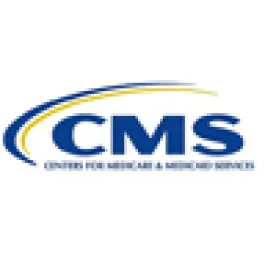On November 16, 2015, The Centers for Medicare & Medicaid Services, CMS, issued a finalized rule requiring bundled payments for all lower extremity replacement and reattachment surgeries for Medicare fee-for-service beneficiaries in 67 geographic locations. The new payment model covers all Part A and B services provided to eligible beneficiaries for DRGs 469 (major joint replacement or reattachment of lower extremity with major complications or comorbidities) and 470 (major joint replacement or reattachment of lower extremity without major complications or comorbidities). The bundled payment program includes all items and services during the initial hospitalization and within 90 days of discharge. In addition to physician and inpatient hospital services, the bundled payment includes all services received in an inpatient psychiatric facility, long-term care hospital, inpatient rehabilitation facility, skilled nursing facility, home health agency, hospital outpatient setting, independent outpatient therapy, clinical laboratory, as well as durable medical equipment, Part B drugs, and hospice.
As initially proposed in July 2015, the bundled payment program would have started on January 1, 2016 and been implemented in over 800 hospitals in 75 geographic reasons having populations of more than 50,000 people. The finalized rule scales back the program to 67 geographic regions with a start date of April 1, 2016. Despite these concessions, CMS’ bundled payment initiative, called the Comprehensive Care for Joint Replacement (CJR), is a significant change to Medicare’s reimbursement policy. CMS’ previous bundled payment initiatives – most notably the Bundled Payment for Care Improvement (BPCI) Initiative – were voluntary, allowing only those hospitals, post-acute care facilities, and physician groups who wished to be involved to participate.
Despite strong opposition to the mandatory nature of the CJR, CMS ultimately retained the mandatory requirement in an effort to drive significant payment reform. Hip and knee replacements together account for the largest cost for any procedure within Medicare. In 2013, they accounted for 400,000 inpatient procedures, costing more than $7 billion for hospitalizations alone. In addition, common complications such as infection and implant failures are almost three times higher at some facilities than others. Costs also vary widely, ranging between $16,500-$33,000 across the country, a difference of $6.6 trillion to the system. CMS estimates that the CJR will result in Medicare savings of more than $343 million over the course of the five-year program.
Critically, under the CJR, hospitals will be responsible for both the cost and quality of care over the entire episode of care. Over the course of the episode, providers will bill Medicare for their services. At the conclusion of the episode, actual spending will be reconciled against the hospital’s “target price.” Hospitals that achieve actual payments below the target price and meet quality measures will be eligible for a “reconciliation payment.” Starting in the second performance year, hospitals whose actual costs are above the target price will be responsible for repaying Medicare. The CJR program will set different target prices depending on whether the joint replacement is an elective procedure or is the result of a fracture.
Under the CJR model, eligible Medicare beneficiaries who choose to receive services from a hospital in the designated geographic regions will not have the option to opt out of the bulk payment model. Beneficiaries, however, retain the freedom to obtain health services from any individual or organization qualified to participate in the Medicare program. All acute care hospitals in the designated geographic regions who discharge eligible Medicare beneficiaries with DRGs of 469 or 470 will be reimbursed under the CJR. The model is scheduled to run through December 31, 2020, during which time CMS intends to “test whether providers under the bundled payment system are able to improve the coordination and transition of care, invest in infrastructure and redesigned care processes for high quality and efficient service delivery, and incentivize higher value across the inpatient and post-acute care spectrum spending the episode of care.”



 />i
/>i

